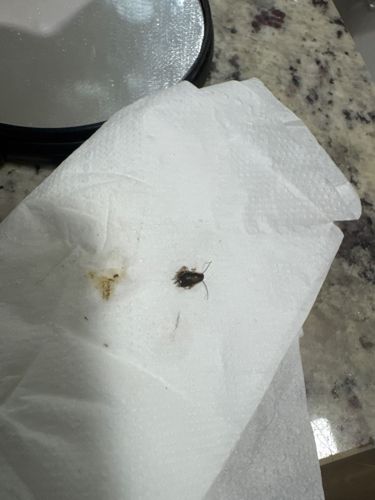Cockroach (likely a German or American Cockroach nymph based on appearance)
Scientific Name: Various species, e.g.,Blattella germanica (German Cockroach) or Periplaneta americana (American Cockroach)
Order & Family: Order: Blattodea, Family: Blattidae (or Ectobiidae for German Cockroach)
Size: Varies by species. Nymphs (like the one pictured) are smaller. German cockroaches range from 1/2 to 5/8 inch (1.3-1.6 cm), while American cockroaches are larger, 1.5 to 2 inches (3.8-5 cm) as adults.

Natural Habitat
Found globally, especially in human dwellings. They prefer warm, dark, and humid environments, such as kitchens, bathrooms, basements, and drains. German cockroaches are often found indoors, while American cockroaches can be found both indoors and outdoors in sewers, basements, and around foundations.
Diet & Feeding
Omnivorous scavengers. They will eat almost any organic matter, including crumbs, grease, decaying food, paper, fabric, and even other dead insects. They are particularly attracted to starches, sugars, and fatty foods.
Behavior Patterns
Cockroaches are primarily nocturnal and gregarious. They can run very quickly and will scatter when disturbed. They communicate through chemical signals (pheromones) and are known for their rapid reproduction rate. They are also known to be highly adaptable and resilient.
Risks & Benefits
Potential Risks: Known to carry and spread various pathogens, including bacteria (e.g., Salmonella, E. coli), viruses, and parasitic worms, contributing to food poisoning and other illnesses. Their droppings and shed skins can trigger allergies and asthma in sensitive individuals. They are considered pests due to contamination of food and surfaces, and can cause damage to household items. Benefits: In nature, they play a role as decomposers, breaking down organic matter. However, their presence in human environments is almost exclusively negative.
Identified on: 8/19/2025